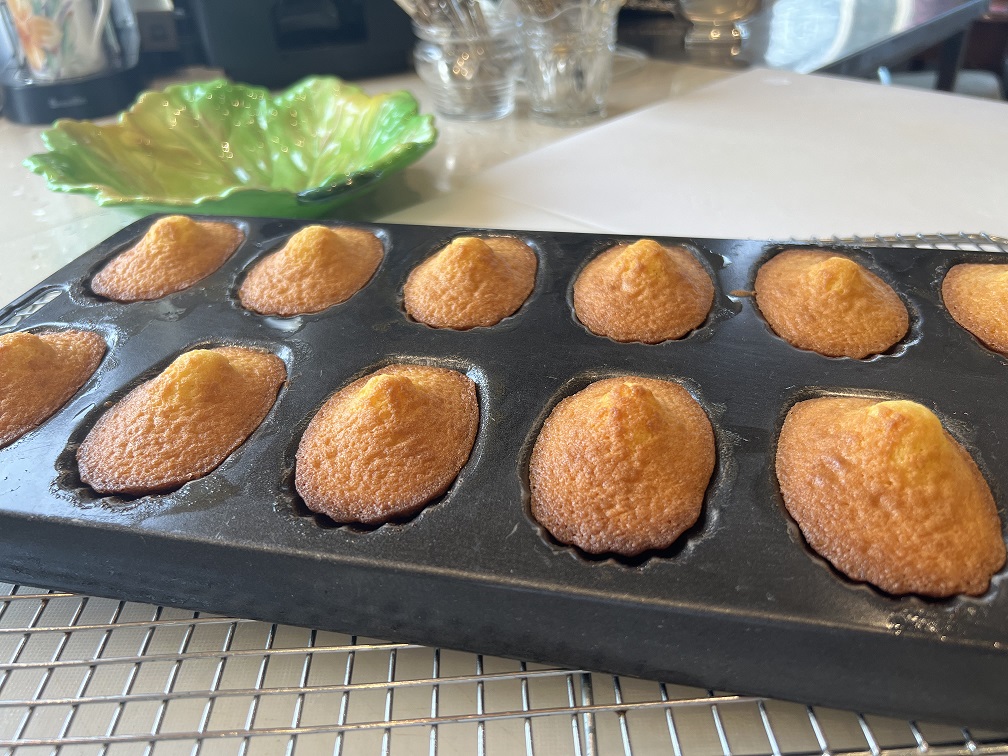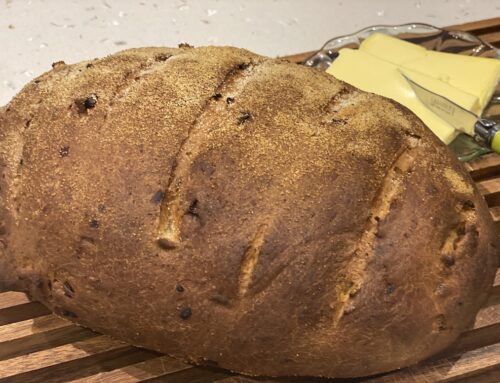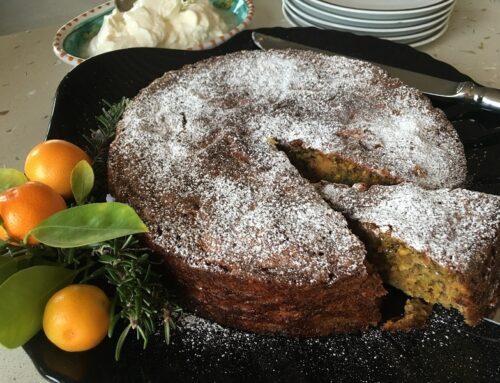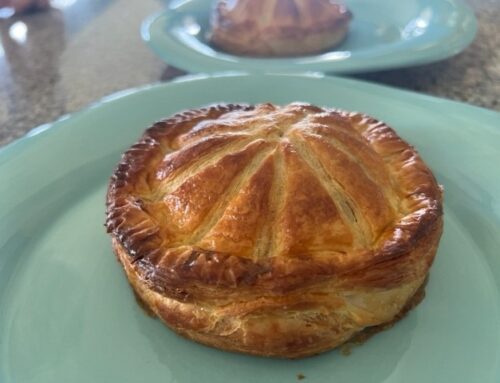My preparation for the French cooking classes morning tea often includes making Madeleines, the plump, little cakes, the French love to eat. Madeleines are moulded in the fluted scallop shape of the pilgrim’s shell, adding a lot to their appeal. Here is my mise en place, with ingredients weighed and measured; next is the baking on the morning of the class. They are best when freshly baked, and straight from the oven. These Madeleine fill the kitchen with a wonderful aroma, ready to greet the class on their arrival and their morning tea.
- Mise en plus for the Madeleines
- Madeleines de Lorraine
This is my recipe:
To make the Madeleines, a special fluted tin is needed, which shapes the base of the cakes in the characteristic way and form of the scallop shell; the tin’s shape also enables the mixture to rise in the central dome. If you use ordinary muffin tins, your madeleines will look gently curved as any plain cake. You can bake a variety of mixtures in the tins and achieve the same effect. Madeleines are delicious with coffee and, in France, it is acceptable to ‘dunk’ them!
This recipe makes 12 large Madeleines and 24 small tray Madeleines
125g flour
1 tsp baking powder
125g caster sugar
4 eggs
1 tsp orange flower water
zest of 1 orange or 1 lemon
125g butter, melted
Icing sugar for sprinkling
Preheat the oven to 230ºC. Thoroughly butter the moulds. Sift the flour with the baking powder. Whisk the caster sugar and the eggs together until thick and light; then beat in the orange flower water and the orange or lemon zest. Fold in the flour, sifting it over the egg mixture in three batches. When the last batch is almost mixed, sprinkle the melted butter over it and fold together as gently as possible; the batter quickly loses its volume after the butter is added. Chill the batter for 20 – 30 minutes or until the batter hardens slightly and the dough is stiffer. I often leave mine overnight.
Using a large spoon, pour the mixture into the Madeleine moulds, filling them by two thirds.
Bake the madeleines in the heated oven for 5 minutes; reduce the temperature to 200ºC and bake a further 5 – 7 minutes or until golden. The timing here depends on the size of the moulds, so watch carefully. A peak, or dome, in the centre of these cakes is characteristic. Transfer to the cake rack to cool. Dust with icing sugar and serve.
Madeleines are plump little cakes, petit-fours, that have been moulded in the fluted scallop shape of the pilgrim’s shell. Legend has it that they were made in the scallop-shell shape in homage to the pilgrims going to Santiago de Compostela. These pilgrims always carried a scallop shell, as do the current pilgrims, as a symbol to indicate that they were undertaking the sacred pilgrimage to Santiago, St Jacques in French and St James, in English. The pilgrims used these shells as a bowl for food and as a cup for water when they visited the monasteries en route to Santiago de Compostella. The monks used the shells to measure the food portions. The nuns also made little cakes for the pilgrims; perhaps they also made them in scallop shells? I am sure we could find a legend to say so!
More on the Story of the Madeleines
To the French, Madeleines are the mainstay of Lorraine’s heritage and were made famous by French writer, Marcel Proust when he wrote about them in his seven-volume work, ‘In search of lost time’*.
Commercy, in Lorraine, is famous for them, and it is said where they were first made. In Commercy they still bake huge quantities for distribution all over France. Commercy was originally built on the site of a medieval fortress, the castle and residence of King Stanislas. It is said Madeleines originated in Commercy in 1755, when Madeleine, a servant-girl to King Stanislas, made these for his guests.
My favourite Madeleines are the Madeleine de Liverdun, made in Liverdun, near Commercy. These are made to the unique recipe invented by baker, Joseph Rouvenacht, with the help of his assistant Marcel Chenel. This little sumptuous shell-shaped delicacy was all the rage in nearby Nancy but their fame spread throughout France.
Madeleines may be both sweet and savoury; this recipe is for the classic Madeleine.
*’In Search of Lost Time’, Proust’s narrator recalls an episode from his childhood after tasting a madeleine dipped in tea catapulting it into history forever. ‘No sooner had the warm liquid mixed with the crumbs touched my palate than a shudder ran through me and I stopped, intent upon the extraordinary thing that was happening to me.” https://www.finedininglovers.com/stories/proust-madeleine/








